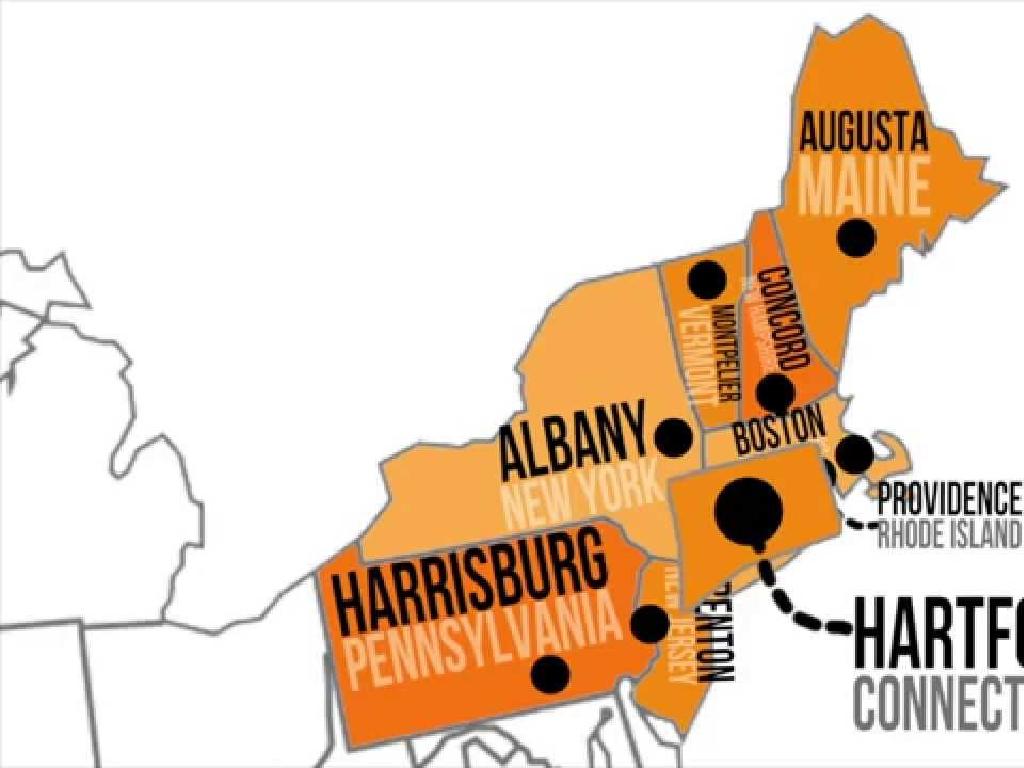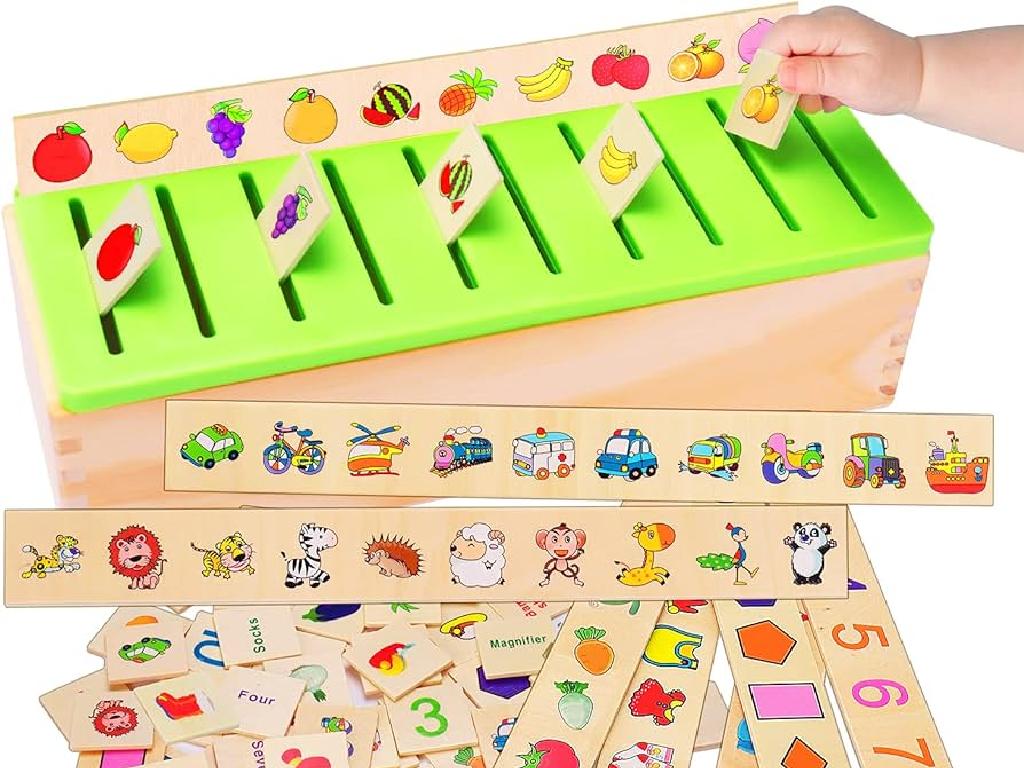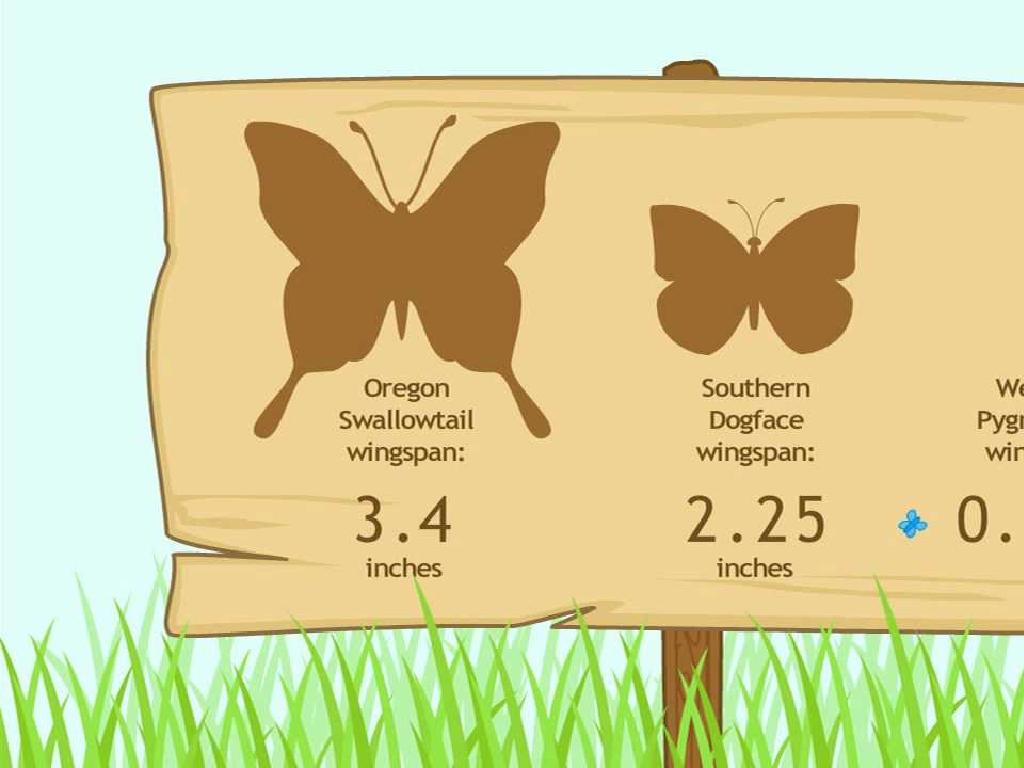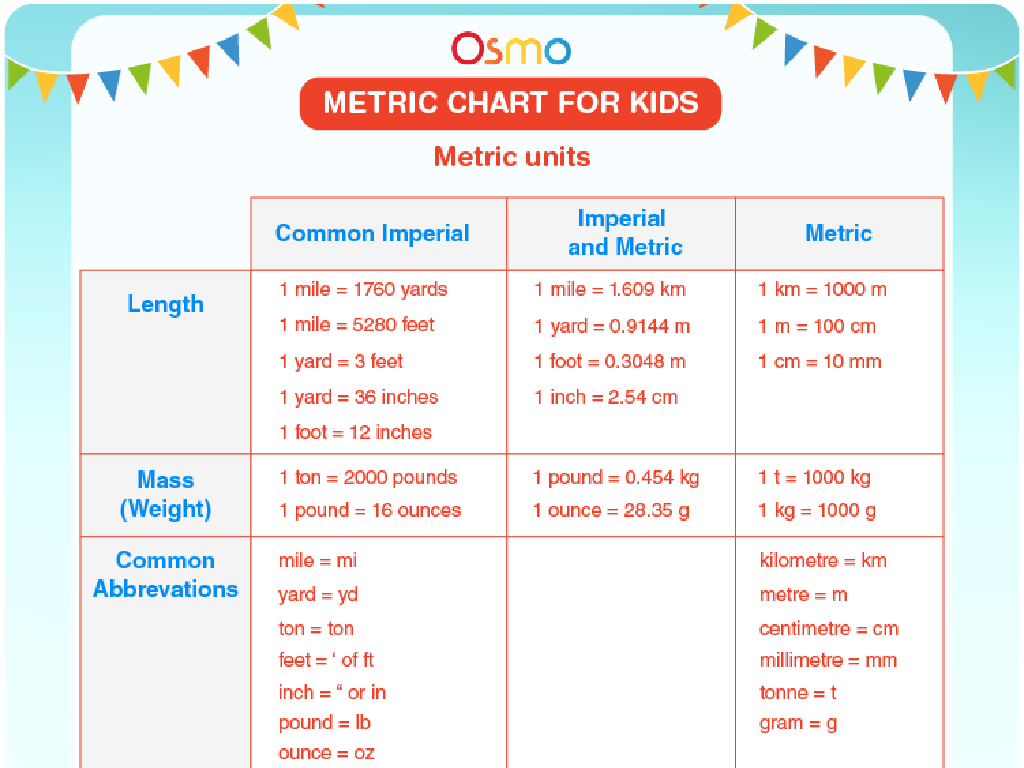Select The Words That Don'T Belong
Subject: Language arts
Grade: Fourth grade
Topic: Categories
Please LOG IN to download the presentation. Access is available to registered users only.
View More Content
Today’s Adventure: Categories!
– Learn to group words
– Grouping words helps us see connections.
– Discover why categories matter
– Sorting words into categories improves comprehension.
– Practice with fun activities
– We’ll sort words together and explain our choices.
– Enhance vocabulary skills
– Strong categorizing skills lead to a richer vocabulary.
|
This slide introduces the concept of categorizing words, an essential skill in language arts that aids in comprehension and vocabulary building. Start by explaining how categorizing helps us organize our thoughts and understand relationships between words. Emphasize the importance of this skill for reading comprehension and communication. Engage the class with interactive activities where they group words and explain their reasoning, fostering critical thinking. Highlight how mastering this skill can expand their vocabulary and enhance their ability to express themselves more clearly.
Understanding Categories
– Categories organize thoughts
– Like folders for our brain to sort information
– Examples: Fruits, Animals, Shapes
– Apple, Dog, Triangle – all belong to different categories
– Activity: Naming category items
– Think of items that fit in these groups
|
This slide introduces the concept of categories, which are like mental ‘folders’ that help us sort and organize information. Provide clear examples of categories such as Fruits, Animals, and Shapes to help students understand. For the activity, encourage students to actively participate by naming items that belong to each category. This will help them grasp the concept of grouping and classifying items based on their characteristics. The activity should be interactive, allowing each student to contribute and learn from others’ examples. Reinforce the idea that categories help us make sense of the world by organizing objects, ideas, and information into groups with shared attributes.
Finding the Odd One Out
– Words may not fit a category
– Spotting the odd word out
– Helps us learn what doesn’t belong
– Understanding categories
– Categories group similar items
– Practice with an example
– Apple, Banana, Orange are fruits; Car is not
|
This slide introduces the concept of categorization by identifying words that don’t belong in a group. It’s a critical thinking exercise that helps students understand how to group similar items and recognize which item doesn’t fit. The example provided uses common objects to illustrate the point in a clear and relatable way. Encourage students to explain why the odd word doesn’t belong, reinforcing their understanding of categories. In the next class, students can practice with more examples and even create their own lists for peers to solve.
Let’s Practice Together: Word Categories
– Examine a list of words
– Find the odd word out
– Which word seems different from the others?
– Discuss reasons for your choice
– Think about why it doesn’t belong
– Share with the class
|
This slide is for a class activity aimed at helping students understand the concept of categories by identifying words that don’t fit into a given group. Provide a list of words where most belong to a certain category, and one does not. Encourage students to look for patterns and use their reasoning skills to decide which word doesn’t belong. After they make their selection, ask them to explain their reasoning, fostering critical thinking. When sharing with the class, this will also allow for discussion and understanding that there can be multiple perspectives in categorizing words. Possible lists could include fruits with one vegetable, or types of transportation with one animal, etc.
Choosing the Odd Word Out
– Similar items in categories
– Some categories overlap, like fruits and red things.
– Words with multiple categories
– A word like ‘bat’ can mean an animal or sports equipment.
– Use critical thinking
– Think carefully to decide which word doesn’t fit.
– Practice with examples
|
This slide addresses the challenges students may face when selecting words that don’t belong in a specific category. It’s important to highlight that some items may seem like they fit into more than one category, which can be confusing. For example, tomatoes can be in both the fruits and vegetables categories. Additionally, some words have multiple meanings, making it tricky to categorize them without context. Encourage students to use critical thinking by examining the attributes of each word and how they relate to the others in the list. Provide practice with examples in class to help students apply these concepts.
Group Activity: Word Selection
– Split into small groups
– Each group receives a word set
– Discuss words within the group
– Talk about why some words seem out of place
– Choose words that don’t fit
– Is it because of the category or something else?
|
This activity is designed to enhance the students’ understanding of categories and word relationships. By working in small groups, students will engage in collaborative learning, which will help them to communicate and justify their reasoning. Each group will receive a set of words that mostly belong to a specific category, with a few words that do not fit. The task is to identify and select the words that don’t belong. Teachers should prepare diverse sets of words in advance, ensuring that the words that don’t belong are not too obvious. During the activity, circulate among the groups to facilitate discussion and guide students as they explore the reasons behind their choices. After the activity, bring the class together for a discussion to share their findings and reasoning, reinforcing the concept of categories and context in language.
Share Your Findings: Odd Words Out
– Each group presents their findings
– Explain the reasons for choices
– Why is ‘apple’ odd in a list with ‘dog’, ‘cat’, ‘bird’?
– Class votes on the selections
– Discuss the voting outcome
– Reflect on the reasons for the class’s votes
|
This slide is for a class activity where students work in groups to identify words that don’t fit into a certain category and then present their findings to the class. Each group will explain their reasoning behind their choices, and the rest of the class will vote to agree or disagree with the group’s decision. This activity encourages critical thinking and understanding of categories in language arts. It also involves the class in active participation and discussion. As a teacher, facilitate the presentations, guide the voting process, and lead a discussion on why certain words were chosen as the odd ones out, ensuring that each student understands the concept of categorization and the importance of context in language.
Class Activity: Create Your Own Categories!
– Be creative with your word list
– Include one word that doesn’t fit
– Think of a category and add a word that doesn’t match
– We’ll find the odd one out together
– Share your list with the class
– Explain why you chose those words
|
This activity is designed to engage students in understanding categories and identifying words that do not belong. Encourage them to think of a category such as fruits, colors, or animals, and then create a list of words where one word doesn’t fit the category. This will help them understand how to group words and also to pay attention to details that determine if a word belongs to a group. During the class, each student will share their list, and the class will work together to identify the word that doesn’t belong, discussing the reasons for their choices. This collaborative activity not only reinforces the concept of categories but also promotes critical thinking and reasoning.
Great Work on Word Categories!
– Congratulations on categorizing words!
– Categories organize our vocabulary
– Like sorting books in a library
– Practice categorizing for mastery
– The more you practice, the better you get
– Keep the learning going at home!
– Try sorting objects, foods, or even TV shows into categories
|
This slide is meant to wrap up the lesson on categorizing words. It’s important to praise the students for their effort and to reinforce the concept that categorizing helps us make sense of words and their relationships to each other. Encourage them to continue practicing this skill outside of the classroom by categorizing everyday items they encounter. This will help solidify their understanding and make them more adept at using categories to enhance their language arts skills.





